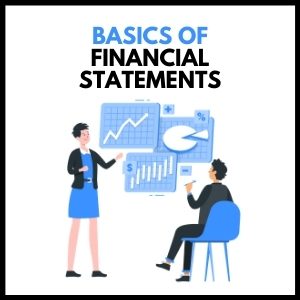Have you ever seen a Financial Statement of a company and left wondering what is it all about?
For professionals who don’t come from an accounting or finance background, it can be quite overwhelming as such.
Basic terminologies may sound quite un-familiar.
Well, we will dive into some of the basics of the financial statements in this article further on.
So, lets start from the beginning!
What are Financial statements?
They are simply a reporting of the financial performance of a company. For example, every business needs to prepare an Income statement, Balance sheet and Cash Flows statement to show how the performance has been over the past year or quarter.
What is an Income statement?
An income statement is a statement that tells us how much profits or loss did a company make in any financial period. Typically, it is prepared for a particular quarter or a full financial year. It starts with the Revenues of a company and takes out all the costs (including taxes) to arrive at the profit or loss of the company.
What is a Balance sheet?
Well, a Balance sheet is another financial statement that shows the assets and liabilities of a company at the end of a financial period. Typically, it is prepared at the end of a quarter or a full financial year. The assets side shows all the investments the company needs to run the business and the liabilities show how the assets are financed by different funding sources like debt, equity, etc.
What is a Cash Flows statement?
A cash flows statement is probably the most important financial statement that any company needs to prepare. It simply shows all the items that led to cash movements – what cash came into the business and what cash went out of it during any financial period. Just like Income statement, it is also prepared for a particular quarter or a full financial year.
Does every business need to prepare Financial Statements?
Yes, every business which is registered in any form (sole proprietorship, partnership or a company) needs to prepare the Financial statements. Depending on the regulations of the country where the company is legally registered, they may need to prepare this every quarter as well as at the end of the full financial year.
What is the real utility of these Financial Statements?
Well, beyond the regulatory requirements of preparing these Financial Statements for tax, external audit, etc. purposes, there is a real value of these financial statements.
These statements provide real valuable information to business stakeholders on some key strategic questions –
- Is the business profitable or not?
Simply look at the Income statement of a company and you will know if the economics of a business is worth it or not. Sometimes, we look at the revenues of a company and conclude the business model is viable. But really, what we should be looking at is the profits trajectory of the company. A profit-making business is a really long-term sustainable business under any situation. The Income statement can reveal the true profitability of the business.
- How much capital investments do I need to make?
This is where the Balance Sheet comes into play. The Asset side of the Balance Sheets any investments you need to buy to run the business both on a long term as well as short term basis. Any capital expenditure (capex) that the business incurs becomes part of the Balance sheet for ever and continues to remain in the books until it completely wears off due to constant use (depreciation). Similarly, the business may also need to make investments in inventory and other short term assets which is also recorded on the assets side of the Balance Sheet.
- How will you fund the investments?
Now this again is a perspective which is clear if you look at the Liabilities side of the Balance sheet. The liabilities side of the Balance sheet contains information on how much funding a business has secured either from debt (bank borrowings) or equity (owners capital contribution). These liabilities continue to remain in the accounting books until it is paid off completely. Also, there are other short term liabilities in the business like vendor payables – this is simply the credit the business has received from the vendors/suppliers and needs to be paid off eventually.
So, as you can see, there is some real valuable insights that the Financial statements can reveal about any business.
Interested to learn more about the Finance Fundamentals? Check out our latest online courses here.
Read more on our LinkedIn page



6 thoughts on “The Basics of Financial Statements: Understanding the Key Components”
[…] analyzing a company’s financial statements, remember to keep in mind the four main components: assets, liabilities, equity, and capital. These […]
[…] life. Since depreciation expense has as significant impact on the company’s tax liability and financial statements it is important to accurately calculate the […]
[…] diagrams. The second section includes more detailed financial information in the form of Financial Statements. The Financial Statements are usually prepared by professionals because it is used as a marketing […]
Thank you for every other wonderful post. The place else could anybody get that kind of info in such an ideal approach of writing? I have a presentation next week, and I’m at the search for such information.
Say, you got a nice article post.Much thanks again. Really Cool.
awesome